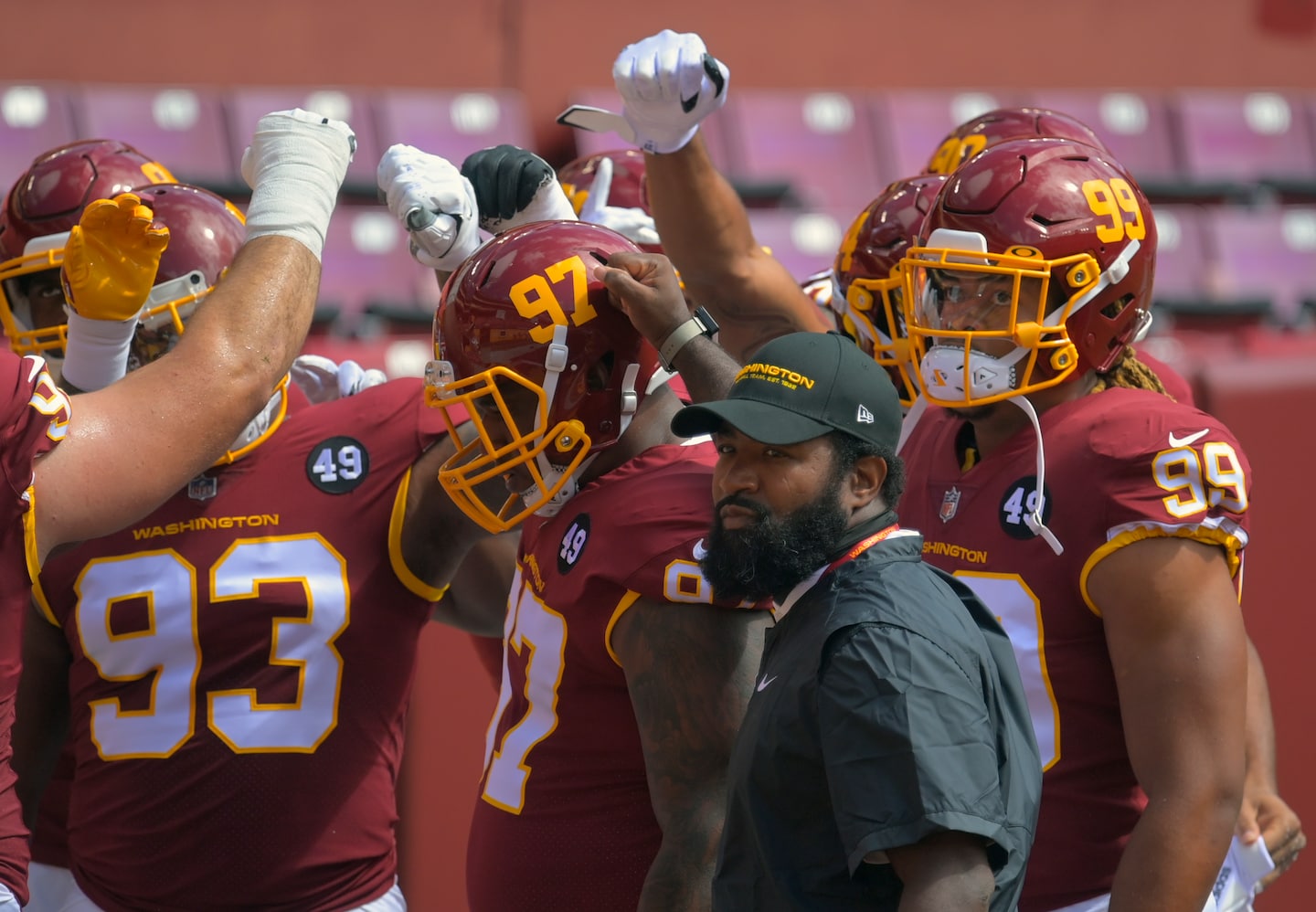Washington football notes: D-line’s depth, Rivera’s gamble and Haskins’ quick release

Rivera said he thought the approach was the key to the group’s success. The Eagles’ offensive line was banged up, sure, but the relentless rush exploited it. Through Sunday’s games, Washington’s defense included five of the 19 players who generated four or more pressures in Week 1, according to Pro Football Focus. Even deeper, this stat reflects a change in defensive mind-set.
Under former defensive coordinator Greg Manusky, the team played a “gap” scheme. This meant linemen often defended the line of scrimmage by standing in the gaps between offensive linemen. But Rivera and Del Rio wanted to be more aggressive, to play more downhill. They wanted linemen to defend the run on their way to the quarterback. This transition, Rivera pointed out, was not easy.
“There are a couple of stubborn guys in that group that really fought the techniques we were trying to teach and trying to get them to understand,” he said Sunday. “They fought it, but today showed them what the results can be and who they can be as football players. Because it is a heck of a group.”
Quarterback Dwayne Haskins noticed the difference between his defensive line and the Eagles’ unit. On Washington’s touchdown drive before halftime, he said, and again throughout the fourth quarter, he saw Philadelphia’s top defensive linemen — Malik Jackson, Brandon Graham, Fletcher Cox — wearing down while Washington’s were heating up. That Washington could generate a pass rush with the linemen alone also allowed Del Rio to be selective with the blitz.
One of the best illustrations of the defensive line’s impact wasn’t a sack or a hit or a pressure. It was late in the fourth quarter, on third and three, when Eagles quarterback Carson Wentz hurried a throw. Washington had rushed only three defenders, but Wentz got rid of the ball quickly, lobbing it just out of wide receiver DeSean Jackson’s reach. It looked like the throw of a quarterback who was expecting pressure.
Perhaps the most important decision Sunday was made by Rivera midway through the fourth quarter. The score was tied at 17, and Washington faced fourth and one from Philadelphia’s 4-yard-line. Rivera considered kicking the field goal, he said, but then he thought about his scalding-hot defense. He thought about starting his tenure strong. He thought about how, back in his early days with the Carolina Panthers, he would have kicked.
He kept the offense on the field.
“I did that to show the guys I really believe in them,” Rivera said. “My first couple years as a head coach [with Carolina], I made that mistake and not showing the team early enough that I believed in them, and it took a little bit longer. I want these guys to know that I believe in them.”
This might have seemed like Washington’s first look at “Riverboat Ron” — the aggressive, risk-taking persona he cultivated with the Panthers. The analytics say it was the right call, though, and in an offseason study of tendencies by the NFL, 21 of 24 other coaches chose to go for it in similar situations.
Running back Peyton Barber carried for a first down and scored two plays later to give Washington a lead it would never relinquish. On Monday, Rivera admitted the team still doesn’t know where it stands on offense, but he made an important point Sunday by showing his players he believes in them.
Dwayne Haskins got rid of the ball fast. Like, quicker-than-every-other-quarterback fast. Like, quicker-than-every-other-quarterback-since-Week-10-last-season fast. Haskins held the ball for 2.25 seconds per attempt, according to NFL Next Gen Stats, and the league average for Week 1 was 2.64. This is in stark contrast to last season, when Haskins’s 2.87-second average was ninth slowest in the league.
There are plenty of plausible explanations for the quick trigger: game plan, defensive pressure, rapid decision-making. It’s tempting to pick just one, but the truth is probably some combination of them. In Rivera’s mind, quick passes came with quick decisions — and nerves. Haskins sometimes forced throws to where a receiver was instead of where he was going to be. Yet Rivera remains unfazed because, as he has said since he was hired, the 22-year-old Haskins is young and growing.
“[The good decisions were] really pleasing,” the coach said. “Even though he may have missed a couple throws, those throws were headed where they were supposed to, to the right receivers.”
Read more:






